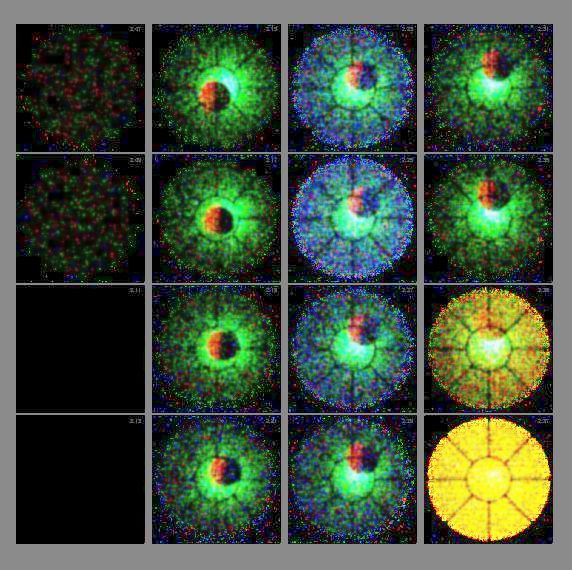
 Credit: Max-Planck-Institut für extraterrestrische Physik,
"Images from the X-ray sky with the ROSAT telescope", Feb 1999
Credit: Max-Planck-Institut für extraterrestrische Physik,
"Images from the X-ray sky with the ROSAT telescope", Feb 1999
Lunar Eclipse of Sco X-1
In the early days of X-ray astronomy it was thought that occultations of
bright X-ray sources by the moon could allow astronomers to pinpoint the
locations of the X-ray emitters and so identify them. The advent of
imaging X-ray optics (first employed by the Einstein X-ray observatory, later by
ROSAT)
allowed astronomers to directly image cosmic X-ray sources; however, an
eclipse lunar occultations can provide a finer measure of the spatial
distribution of the X-ray emitting region around an X-ray source, just as
eclipses of the sun by the moon can provide detailed information about the
hottest emission regions in the solar atmosphere. However, lunar
occultations of X-ray sources are relatively rare, and actually imaging
such an event is rarer still. On Feb 20, 1998 the brightest X-ray source
in the sky, Sco X-1 (a neutron star binary system) was eclipsed by the
moon, and this event was captured by the ROSAT PSPC imager. The image above shows the
source as the moon gradually moves in front of it. In the first column,
after an exposure of a six degree distant comparison field the PSPC is
switched off an pointed to Scorpius X-1. In the second column,
simultanously with the start of the occultation the PSPC is switched on.
The waning X-ray half Moon (red) is scrolling across the scattering halo of
Scorpius X-1 (green) to the top right. Third column: During the flight
through the radiation belt the the detector noise increases for a short
time (blue). Fourth column: The observed constellation is outshined by the
earth's atmosphere (yellow) before it goes down after all behind the
earth's horizon.
The image above appeared in the 1999 ROSAT Calendar, produced by MPE. More such images can be found
at the ROSAT
Calendar Web page.
Last Week *
HEA Dictionary * Archive
* Search HEAPOW
* Education
Each week the HEASARC
brings you new, exciting and beautiful images from X-ray and Gamma ray
astronomy. Check back each week and be sure to check out the HEAPOW archive!
Page Author: Dr. Michael F.
Corcoran
Last modified June 23, 2000


